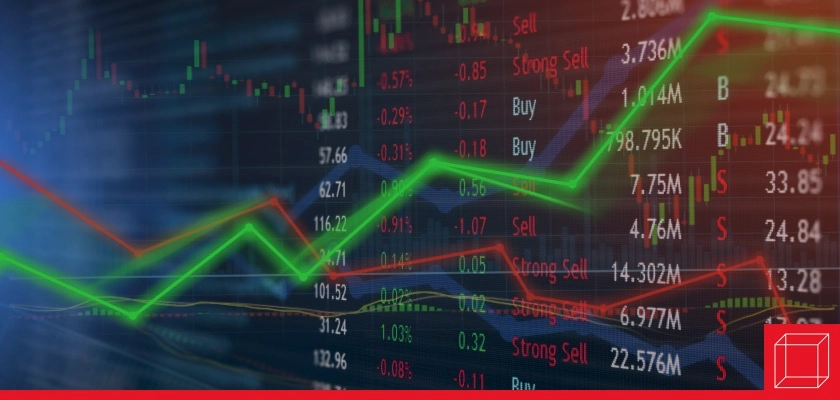She-flation - Erin K. Anderson PhD | June 2022
U.S. inflation has risen higher in the past year than it has in any year since 1981 and women are generally bearing the greatest burdens of these price hikes.

U.S. inflation has risen higher in the past year than it has in any year since 1981 (U.S. Bureau of Labor Statistics 2022). The consumer price index, the tool that measures the cost of goods and services, is currently 8.5% higher than it was a year ago. While most American families are feeling the pinch of rising prices for food, energy, transportation, and other goods and services, women are generally bearing the greatest burdens of these price hikes. This pattern has been called “she-flation” (Storz 2021).
Women’s position in the United States puts them at two distinct disadvantages when it comes to paying for goods and services. First, women earn, on average, $0.83 for every dollar men earn (Wisniewski 2022). While a number of factors might influence this gap (for instance, age, occupation, and family status), it is part of a larger pattern of a persistent wage gap between the sexes. To make matters worse, women from racial and ethnic minorities tend to earn even less. In 2020, Black women earned $0.64 and Latina women earned just $0.57 cents for every dollar that a white, non-Hispanic man earned (Bleiweis, Fry, and Khattar 2021). This gap means that women not only have less take-home pay, they also have less to contribute to retirement savings and social security, so the financial disparity impacts women and their families across the lifespan. Over a lifetime, this wage gap translates to a wealth gap: by retirement age, women own only 32 cents for every dollar men own (Reich and McCulloch 2017).
Second, women often pay more for many goods and services than men do. This upcharge is known as “the pink tax” and can be found on everything from toys to clothing to personal care products. Women pay, on average, 13% more for many products marketed toward them versus those marketed toward men (Myers 2022). For instance, hair care can be 4.94% more expensive for women than for men, shaving cream costs women 9.74% more, and women can expect to spend 24.75% more on razor cartridges than men (Myers 2022). This “tax” results in women spending an average of $1,300 a year more on goods than men (Hoffman 2021).
Many women must also pay a literal tax on products they need. Most states don’t consider feminine hygiene products such as tampons and sanitary napkins to be “essential” products and therefore impose sales taxes on them. Depending on where they live, American women can expect to spend an additional $100–$225 over their lifetime on taxes for feminine hygiene products (Rodriquez 2021).
During good times and bad, American women are at an economic disadvantage, but during periods of inflation, they’re likely more cognizant of the rising costs. Women do the majority of the shopping in their households (Schaeffer 2019) and influence 70–80% of all consumer purchasing decisions in the United States (Davis 2019). Because women spend more time purchasing groceries, clothing, toys, and other family needs, they’re more likely to track price increases and feel the weight of rising costs as inflation rises. The awareness of these price increases along with the greater costs women generally experience has been dubbed “she-flation,” and it jeopardizes the economic security of women and families (Storz 2021).
Questions for Discussion
What policies or practices could help women fight for wage equality?
Have you ever noticed the “pink tax” or price differences in products marketed to men and women? Why do you think these price differences exist?
How do you think inflation, and the higher prices women often experience, impacts your own life?
References
Bleiweis, Robin, Jocelyn Frye, and Rose Khattar. November 17, 2021. “Women of color and the Wage Gap.” Center for American Progress. https://www.americanprogress.org/article/women-of-color-and-the-wage-gap/
Davis, Krystle. May 13, 2019. “20 facts and figures to know when marketing to women.” Forbes https://www.forbes.com/sites/forbescontentmarketing/2019/05/13/20-facts-and-figures-to-know-when-marketing-to-women/?sh=d5fd36d1297e
Hoffman, Meredith. January 11, 2021. “The Pink Tax: How women pay more for pink.” https://www.bankrate.com/finance/credit-cards/pink-tax-how-women-pay-more/
Myers, Kristin. 2022 “Pink Tax” pushes prices up nearly 13%, study shows.” The Balance. https://www.thebalance.com/pink-tax-pushes-prices-up-nearly-13-percent-study-finds-5222209
Reich, Robert and Health McCulloch. August 25, 2017. “Op-Ed: Wealth, not just wages is the way to measure women’s equality.” Los Angeles Times. https://www.latimes.com/opinion/op-ed/la-oe-reich-mcculloch-womens-wealth-gap-20170825-story.html
Rodriquez, Leah. June 28, 2021. “The Tampon Tax: Everything you should know.” https://www.globalcitizen.org/en/content/tampon-tax-explained-definition-facts-statistics/#:~:text=The%20average%20American%20woman%20will,tampon%20taxes%20over%20her%20lifetime.
Schaeffer, Katherine. September 24, 2019. “Among U.S. couples, women do more cooking and grocery shopping than men.” Pew Research Center. https://www.pewresearch.org/fact-tank/2019/09/24/among-u-s-couples-women-do-more-cooking-and-grocery-shopping-than-men/
Storz, Olivia. December 6, 2021. “She-flation? What the rise in inflation might mean for women.” Institute for Women’s Policy Research. https://iwpr.org/media/in-the-lead/she-flation-what-the-rise-in-inflation-might-mean-for-women/
U.S. Bureau of Labor Statistics. April 12, 2022. “Consumer Price Index Summary.” https://www.bls.gov/news.release/cpi.nr0.htm
Wisniewski, Megan. Marc 01, 2022. “In Puerto Rico, No Gap in Median Earnings Between Men and Women.” U.S. Census Bureau. https://www.census.gov/library/stories/2022/03/what-is-the-gender-wage-gap-in-your-state.html




